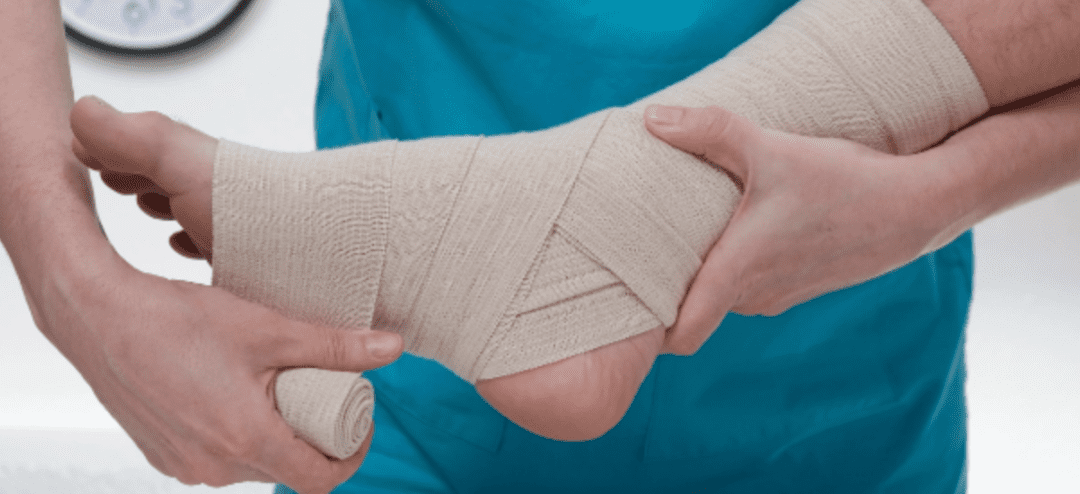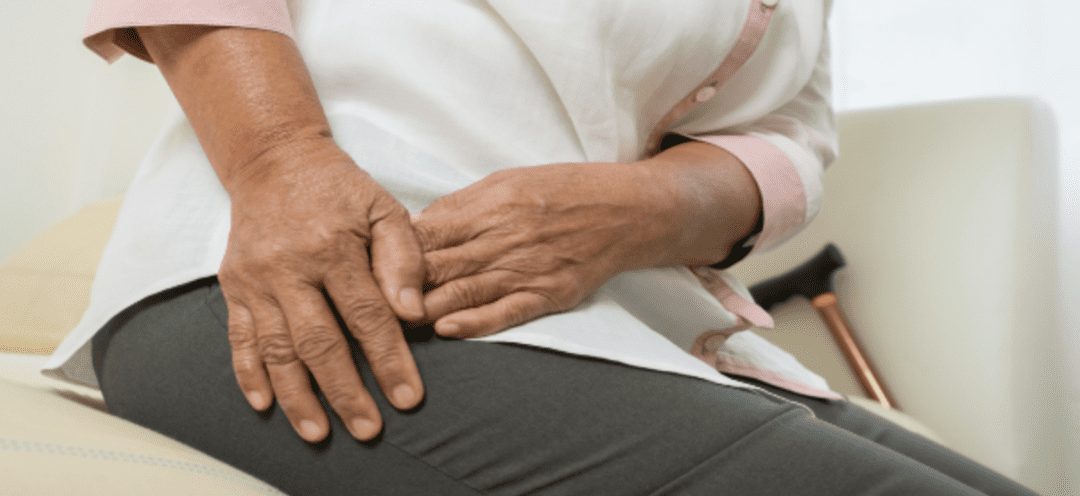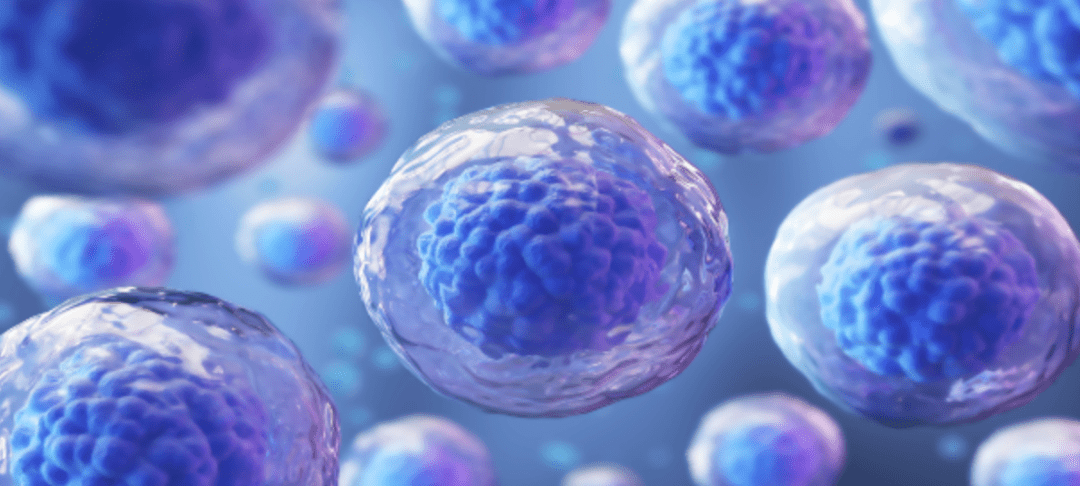
by Stemedix | Nov 21, 2022 | Stem Cell Therapy, Regenerative Medicine
Regenerative medicine, also known as stem cell therapy, is an alternative medicine that seeks to replace damaged tissue and/or organs. Usually, this damage is a result of disease, congenital issues, or trauma. Regenerative therapies are distinct from clinical strategies. Typically, clinical strategies primarily focus on treating the symptoms of an issue. Regenerative therapies, on the other hand, seek to address the issue itself. Here we will discuss Regenerative Medicine for ankle pain.
In recent years and based on research, stem cell therapy has become a more often explored option either in conjunction with traditional medicine or if options have been exhausted. It can be used to help manage and potentially provide a healing cascade for joint pain associated with certain injuries and illnesses.
What Are Stem Cells?
Stem cells are raw materials in the body. They’re the cells from which other specialized cells are generated. Stem cells will divide to form more cells, which are called daughter cells. Daughter cells transform into either new stem cells or specialized cells that perform a more specific function. Some of these specialized cells include:
- Brain cells
- Blood cells
- Bone cells
- Heart muscle cells
Mesenchymal stem cells are fascinating because no other cell in the human body has the ability to generate completely new cell types.
What Is Stem Cell Therapy?
Stem cell therapy uses stem cells to help repair injured, dysfunctional, or diseased tissue. Using stem cells in medicine can help support your body’s ability to heal and regenerate itself while reducing pain.
Common Causes of Ankle Pain
Some common injuries associated with ankle pain include:
- Achilles tendon rupture
- Achilles tendinitis
- Avulsion fracture
Sometimes, ankle pain can happen without an injury, as in the case of rheumatoid arthritis, gout, osteoarthritis, and lupus.
Stem Cell Therapy for Ankle Pain
Since stem cell therapy has dual functions (i.e., the healing function and the pain relief function), stem cell therapy can manage ankle pain that is or isn’t associated with injuries.
Patients’ response to therapy may vary on when they see potential improvements, but generally they may experience some pain relief after around three weeks post-treatment. This improvement will gradually continue over the course of months or years.
Benefits of Regenerative Medicine
Depending on the degree of injury, stem cells have the ability to help regenerate the injured or diseased tissues. For patients who want to avoid invasive surgeries or pain medications to address their musculoskeletal injury, stem cell therapy may be an option to explore. This post was written by a medical professional at Stemedix Inc. At Stemedix we provide access to Regenerative Medicine for Orthopedic also known as Orthopedic Stem cell Therapy. Regenerative medicine has the natural potential to help improve symptoms sometimes lost from the progression of many conditions. If you want to learn more about Regenerative Medicine for ankle pain, contact us today at Stemedix.

by Stemedix | Nov 14, 2022 | Regenerative Medicine, PRP
Among athletic adults, chronic hip pain is common, affecting 30-40% of adults who play sports. In addition, adults over 60 are 12-15% likely to experience chronic hip pain, regardless of their activities. In the past, patients with chronic or acute hip injury pain typically had limited treatment options. The hips are the largest weight-bearing joints, making them more prone to overuse injuries and causing the hips to be especially difficult to heal. As a result, most hip injuries are treated with rest and physical therapy. Platelet-rich plasma (PRP) injections can potentially offer an alternative. Keep reading to learn more about PRP Injections for hip injuries.
What Causes Hip Pain?
Hip pain and injuries can affect patients of all ages. However, it’s most common among older adults. While some patients may experience damage in their hips due to a childhood illness or a structural abnormality, most injuries occur from overuse or trauma.
Hip injuries that patients often experience include:
- Labral tears (damaging the cartilage)
- Strains or sprains
- Dislocated hip
- Fracture
When a hip becomes injured, patients are more likely to experience other conditions that cause chronic pain in the hips, such as arthritis or bursitis.
What Is Platelet-Rich Plasma?
Four components comprise whole blood: the red and white blood cells, platelets, and plasma. Each serves an essential function as blood moves through the body.
Platelets are part of the body’s healing response, clotting the blood, so your injury stops bleeding and releasing growth factors and anti-inflammatory mediators to help facilitate healing.
PRP starts with a sample of the patient’s blood, which then spins in a centrifuge. The centrifuge separates the platelets and plasma from the white and red blood cells. As a result, PRP contains a highly concentrated number of platelets in the plasma.
Once separated, a physician injects PRP into the patient’s injury site to stimulate and expedite healing.
How Can PRP Treat Hip Injuries?
Several studies examine the benefits of PRP in treating hip injuries and pain, specifically hip bursitis, osteoarthritis, and labral tears.
Hip bursitis is particularly difficult to treat, yet studies show the condition is unlikely to resolve without medical intervention. However, recent reviews of using PRP injections to treat hip bursitis show patients experienced significant improvement after their injections. In addition, long-term data showed that patients still benefited from the injections two years later.
In patients with labral tears in their hip, a study examining the effectiveness of PRP injections to treat hip pain found patients experienced significant symptom relief, pain reduction, and improved function after their injections.PRP injections for hip arthritis also show positive results, with patients undergoing the treatment experiencing remarkable improvements in their function and pain within two weeks. With PRP injections, patients suffering from hip pain may have a new avenue to explore when searching for relief. To learn more about PRP Injections for hip injuries, contact a professional at Stemedix today!

by Stemedix | Nov 7, 2022 | Regenerative Medicine, Stem Cell Therapy
Chronic pain can develop anywhere in the body. It can develop from conditions like arthritis, result from a traumatic injury, or serve as an ongoing symptom of diseases such as cancer or neuropathic pain from diabetes. Often, patients suffering from chronic pain feel their only options for relief are ongoing medications to mask their symptoms or surgery, like a knee replacement to treat chronic knee pain. However, regenerative medicine, also known as stem cell therapy, offers a new option for chronic pain patients to explore that may be especially beneficial for those hoping to avoid surgery. Here we will break down why you should choose regenerative medicine over surgery.
Stem Cell Treatments Have Lower Risks than Surgery
You may want to avoid surgery for many reasons, and the risks of anesthesia and the potential for complications with large incisions are essential factors to consider. Stem cell therapy does not require general anesthesia, and since the process only requires injections, not incisions, there are no surgical wounds or scars.
If you’ve had an adverse reaction to anesthesia or possess risk factors for experiencing a negative response, such as age or a coexisting condition, stem cell therapy offers a non-surgical alternative to finding relief.
Stem Cell Treatments Require Minimal Downtime
Suppose that you lead an active, busy lifestyle. In that case, you probably don’t have time for an extended recovery period, especially when that recovery time keeps you from essential activities like driving or walking.
While most surgeries to alleviate chronic pain require extensive downtime, patients who choose stem cell treatments typically return to work or daily activities within a few days. Although stem cells do take time to heal damaged tissues, many patients begin to experience pain relief within two to three weeks.
Surgery Doesn’t Guarantee Pain Relief
When your chronic pain leads you to the point where you’re willing to undergo surgery, you want to know that the preparation, procedure, downtime, and expense will alleviate your pain. Unfortunately, however, that’s not always the case.
A 2018 study showed that 20% of those who undergo a total knee replacement still live with chronic knee pain. In addition, another study revealed that up to 58% of patients who undergo hip replacement surgery continue to endure persistent pain.
Stem Cell Treatments Are Effective and Non-Invasive
It can be hard to believe that stem cell injections can potentially offer similar, if not better, results than surgery. However, research following patients for two years after their stem cell treatments found all participant groups, regardless of age or BMI, experienced significant pain improvement. Patients who feel surgery is their only option to alleviate chronic pain should ask their doctor about the benefits of pursuing stem cell therapy. If surgery is unavoidable, stem cell therapy can also help post-surgery to help improve healing time and reduce pain. If you would like to choose regenerative medicine over surgery contact Stemedix today!

by Stemedix | Oct 31, 2022 | Regenerative Medicine, Athletic Injury
You might suffer from knee pain due to the strain of everyday activities, sports injuries, or accidents. Regardless of the cause, knee pain often worsens over time and can become so debilitating that walking or standing becomes painful. Here we will discuss how regenerative medicine can help damaged knees.
Where Does Knee Damage Occur?
Knee damage can result from continuous stress on the joint or from an injury. Overuse due to certain activities can cause tendinitis (inflammation in the tendons). Excess pressure or stress on the joint can lead to osteoarthritis, a condition in which the joint’s cartilage wears away.
Injuries that can damage the knee include sprained ligaments, strained muscles, or torn cartilage. Any injury to the knee can cause pain, swelling, stiffness, and difficulty walking. If you experience repeated knee injuries, you may be more likely to develop osteoarthritis.
What Is Regenerative Medicine?
Regenerative medicine, also known as stem cell therapy, harnesses the unique qualities of stem cells to repair and restore damaged tissue in the body.
Some cells in the body, like skin cells, constantly divide to create new cells, a process called mitosis. When those cells divide, they make two new, identical cells called daughter cells. Other cells in the body, such as neurons or certain heart cells, never divide at all.
Stem cells stand out as the only cells in the body capable of dividing to create various specialized cells, a process called differentiating. Since many specialized cells do not divide, stem cells are essential to the body’s health.
During stem cell therapy, stem cells are extracted from a patient’s bone marrow or body fat. They are then administered into injured areas, triggering tissue to repair and restore itself. The ability of stem cells to divide into other types of cells gives them impressive healing abilities.
How Can Stem Cell Therapy Help Repair Damaged Knees?
Currently, physicians are using stem cell therapy to promote healing in knee injuries, injecting the cells into damaged joints to accelerate the body’s repair process and foster a complete recovery.
Patients with osteoarthritis experience most of their pain due to a lack of cartilage. Irritation and inflammation can occur when the bones, muscles, and other joint tissues move without the cushioning effects of cartilage.
Stem cell treatments protect and heal the joint tissue affected by cartilage loss, keeping them from further affecting mobility and creating new knee issues, such as bone spurs.
Many patients are exploring the options of regenerative medicine to help manage their pain and inflammation, and in some cases, rebuild and repair damaged tissues. Find out how this new alternative medicine may help you. To learn more about how regenerative medicine can help damaged knees, contact a care coordinator at Stemedix today!

by Stemedix | Sep 26, 2022 | Parkinson's Disease, Regenerative Medicine
For several decades, there has been extensive research into how regenerative medicine, also known as stem cell therapy, can help patients suffering from central nervous system disorders. One of the most heavily researched conditions has been Parkinson’s disease. Patients who struggle with Parkinson’s understand how severe their symptoms can be and how rapidly the disease can progress. This makes finding an effective treatment essential for maintaining the quality of life. Here we will discuss the possible treatments for Parkinson’s Disease.
How Stem Cells Can Make a Difference With Parkinson’s Disease
Recent studies have shown that body fat could be a promising key to helpful stem cell treatment in patients with Parkinson’s disease.
Researchers at Harvard Medical School and Massachusetts General Hospital found that fatty tissue can produce stem cells for treating various central nervous system disorders, providing a homegrown source of regenerative medicine.
Neural stem cells were identified in these studies when scientists assessed body fat in mice. When examining the subcutaneous adipose tissue, researchers found nerve fibers that contained Schwann cells. Schwann cells are a type of cell used in the maintenance and regeneration of neurons in the peripheral nervous system.
In vitro analysis of the Schwann cells revealed that they can provide stem cell-like qualities. These stem cell qualities may have regenerative properties that support motor and sensory actions in patients with conditions like Parkinson’s disease.
One of the benefits of sourcing cells from body fat is that it is derived from the patient’s own tissue. Using homegrown stem cells has been shown to be most effective when treating numerous conditions.
Scientists found that the Schwann cells discovered in the study improved digestive function in mice with disorders like gastroparesis and colonic aganglionosis. This occurred when injected into the gastrointestinal tract of the mice.
When applied to the central nervous system, these cells could potentially improve nervous system function in patients with certain neurological disorders.
A researcher in this study explained:
“Because adipose stem cells are widely considered to be safe therapeutic agents for humans … the derivation of SAT-[neural stem cells] offers unprecedented potential for therapeutic application in neurological diseases.”
This means that the cells identified in the study could one day provide a safe, natural treatment for patients struggling with the symptoms of Parkinson’s disease.
A Promising Option For Parkinson’s
It is worth noting that there’s still much research to do when it comes to stem cells and how they might treat various disorders.
The relationship between Parkinson’s disease and stem cell therapy is the subject of several ongoing studies. The hope is that stem cell treatments are soon widely accepted as an alternative way to potentially relieve the effects of degenerative neurological conditions. If you would like to learn more about the available treatments for Parkinson’s Disease contact us today at Stemedix!

by Stemedix | Aug 22, 2022 | Athletic Injury, Regenerative Medicine, Stem Cell Therapy
When you first suffer from an injury, you focus on assessing damage and dealing with pain. As you start to recover, you may focus on when you can resume your everyday life. Fully recovering from an injury can take substantial time. That timeline lengthens if your tissues aren’t healing properly. A very common question we get is ” Are my tissues healing properly after my injury? “. Here we will discuss injury recovery and what you should expect.
What Should I Expect from Recovery?
Injury recovery has four main stages. These stages often overlap, so multiple parts of the recovery process occur at once.
Stage 1: Bleeding
Internal soft tissues bleed from an injury just like a cut to the skin causes bleeding. Since muscles receive a steady blood supply, muscle injuries tend to bleed more, causing larger, deeper bruising. Other tissues, like ligaments, don’t receive as much blood, so they tend to bleed and bruise less.
At the bleeding stage, a patient’s job is to rest and allow the bleeding to stop. Rest is particularly critical in the first hours after an injury.
Stage 2: Swelling
The area will begin to swell within one to two hours after an injury. Swelling and inflammation are part of the body’s healing response and serve to protect the injured area. While most swelling peaks within three days of an injury, it can persist for a few weeks as you recover.
Stage 3: Scar Tissue
The body starts developing scar tissue within one to two days of experiencing an injury, and this process continues for up to four to six months. Therefore, it’s essential to move and gradually incorporate pain-free, low-impact exercise at this time so your new scar tissue can build with strength and flexibility.
Stage 4: Remodeling or Maturation
The remodeling phase is the longest and final stage of wound recovery, beginning around three weeks after the injury and continuing for up to two years. At this time, collagen synthesis strengthens the surrounding tissue, and the fibers reorganize to reform the injured area.
An injury tends to result in tissues about 80% as strong as uninjured tissue.
How Long Should My Recovery Take?
The length of time an injury takes to heal depends on the injury’s severity, the patient’s age, the type of injury, and several other factors. The time frame for a specific injury to heal is broken out here:
- Broken Bones: Six weeks to three months
- Cartilage: Twelve weeks or longer
- Muscle Injury or Strains: A few weeks to six months
- Tendons: Four to six weeks
- Ligaments: Three weeks to eight months
Regenerative medicine, also known as stem cell therapy, can help facilitate the healing process for specific injuries. Other options, for example, therapies such as Platelet Rich Plasma (PRP) and Peptides can also be used if you’re concerned about the length of time an injury takes to heal. If you are asking yourself ” Are my tissues healing properly after my injury” or you would like to learn more about the treatment options we have here at Stemedix, contact us today!







 St. Petersburg, Florida
St. Petersburg, Florida
